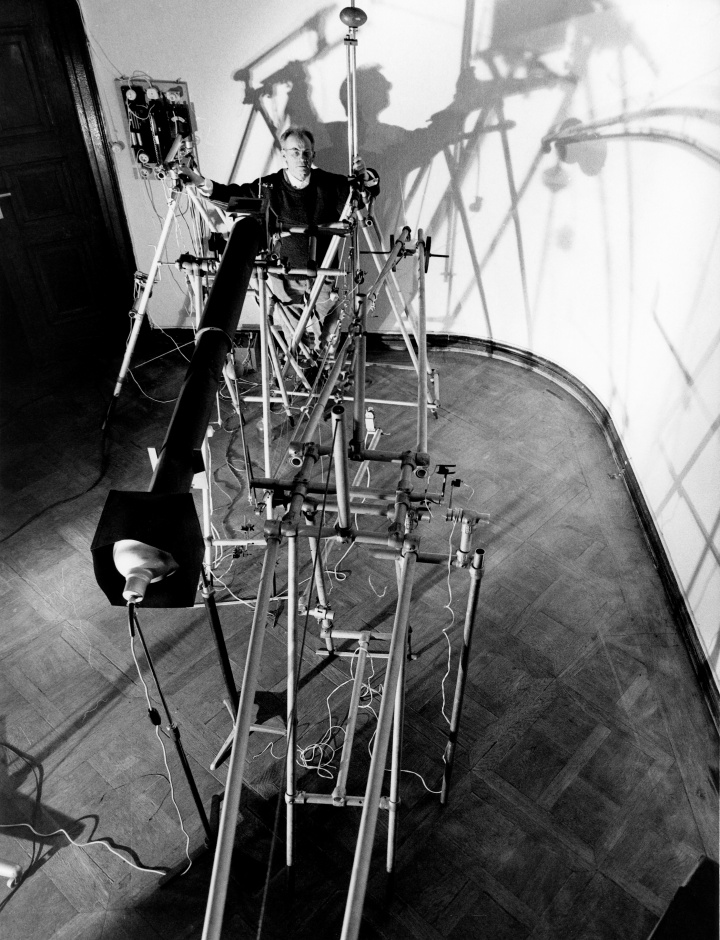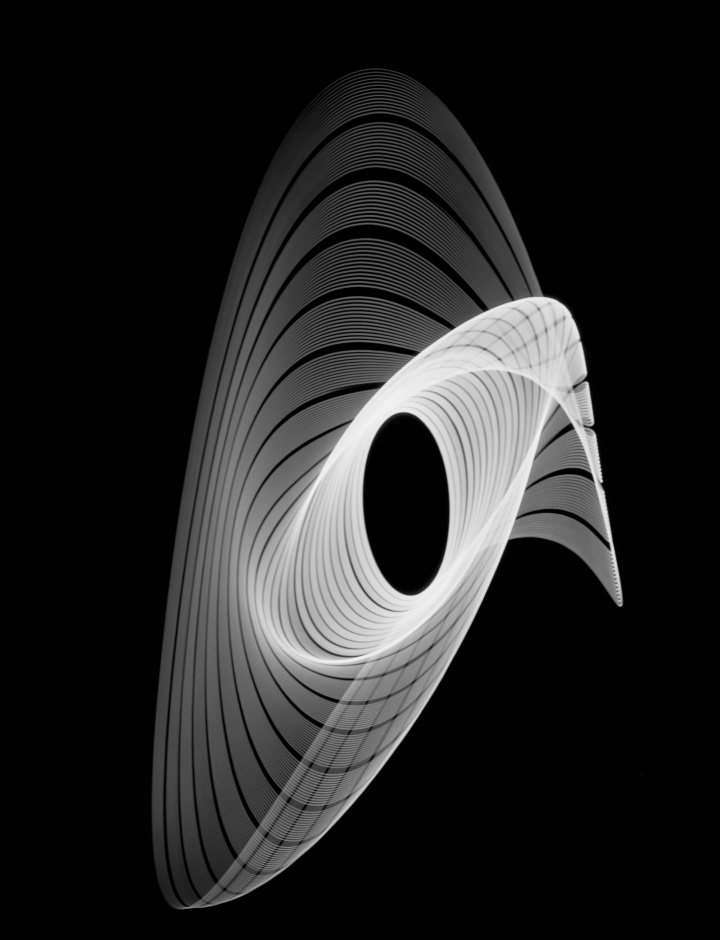
Swinging Light
Rhythmograms
“Let us admire, even if we don’t understand,” wrote Jean Cocteau enthusiastically regarding Heidersberger’s Rhythmogramme (Rhythmograms) in a letter addressed to the latter in 1962. The French writer and film director, by then already a member of the Académie française, viewed the creations of the machine the photo artist had designed and constructed himself in the 1950s as “proof that chance does not exist for poets, or rather they give it another name.”
At the same time, Oskar Kreisel and Peter Keetman were also creating photographic images with experimental techniques and pendulum oscillations, but Heidersberger was able to cheat chance with the help of the Rhythmograph’s large-scale apparatus: once set in motion, this photographic drawing machine uses long exposure times to create extremely complex images of light tracings. The dynamic vibrations it captures yield two-dimensional objects with three-dimensional effects. Frequently exhibited, his oscillating light photographs received the silver medal at the 1957 Milan Triennale XI, among other prizes.
The invitation in 1955 to create a mural for the newly built engineering school in Wolfenbüttel, which was to illustrate the technical disciplines taught at the school, was a welcome opportunity for him to expand his work with luminography.









